Polymeric Sand for Pavers: The Complete Guide
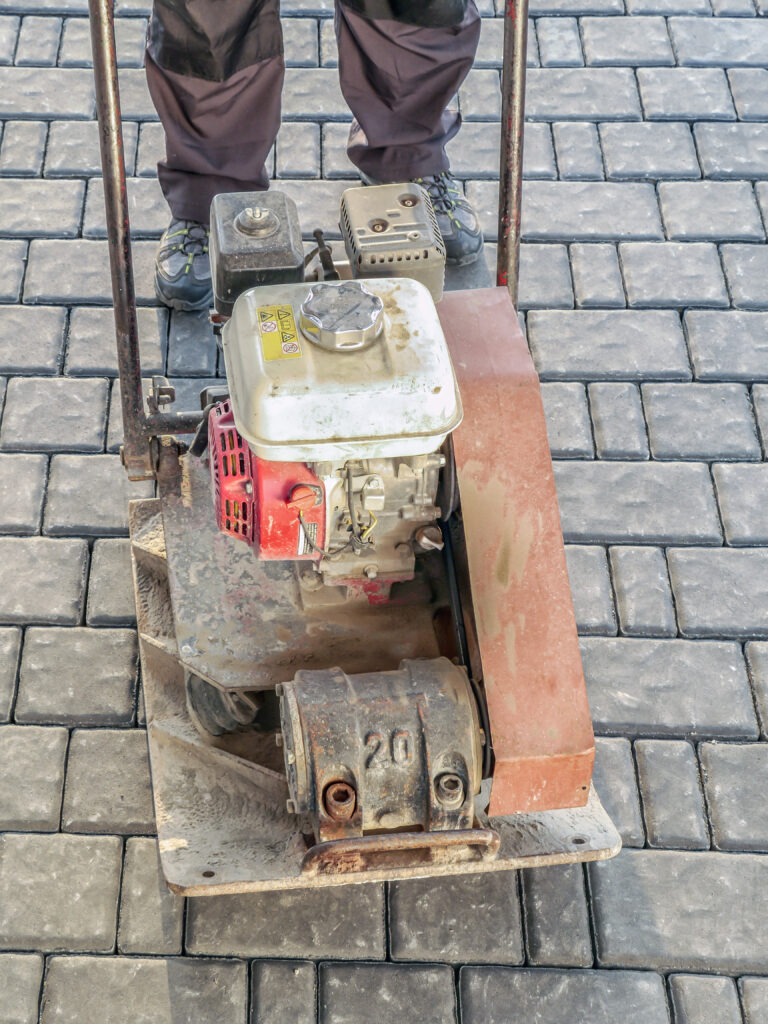
Should I Use Paver Sand or Polymeric Sand? Polymeric sand has emerged as the widely accepted best practice for installing pavers, revolutionizing the way outdoor surfaces are constructed. Its popularity is rooted in a myriad of benefits that address common concerns associated with traditional paver sand. Understanding these advantages sheds light on why polymeric sand has become the preferred choice for homeowners and professionals alike. What Is Polymeric Sand? Polymeric sand is a high-tech mix of graded sand and polymers, specifically designed for filling joints between interlocking pavers and slabs. The polymers, when activated with water, create a binding agent that solidifies the sand, forming a stable and durable connection between the pavers. This innovative solution addresses the shortcomings of traditional sand by offering superior cohesion, longevity, and weed resistance. How Many Years Does Polymeric Sand Last? Polymeric sand is renowned for its impressive longevity, often outlasting traditional sand options. When properly installed and maintained, polymeric sand can endure for 10-15 years, providing a stable and cohesive joint filling between interlocking pavers. Its ability to harden upon activation with water creates a robust bond that withstands the rigors of weather, foot traffic, and other environmental stressors. Factors Influencing Durability: Several factors play a role in determining the durability and effectiveness of polymeric sand over time: What to Do If Polymeric Sand Did Not Harden? Encountering issues with polymeric sand failing to harden as expected can be a concern, but with proper troubleshooting and proactive measures, these challenges can often be addressed effectively. Here is guidance on how to troubleshoot and resolve issues if polymeric sand does not harden as anticipated: How Big of a Gap Can Polymeric Sand Fill? Polymeric sand is effective in filling a range of gap sizes between pavers. It works well with joints that are typically 1/8 inch to 1 inch wide, providing stability and cohesion within this size range. While polymeric sand is versatile, optimal performance is achieved within the recommended gap sizes. Smaller gaps may not allow for proper compaction, and larger gaps may result in an inadequate amount of sand to create a strong bond. Do You Compact Pavers Before Polymeric Sand? You need to compact your pavers after applying the polymeric sand. Compacting pavers after applying polymeric sand is a crucial step in the installation process, and it plays a pivotal role in ensuring the effectiveness and longevity of the sand-filled joints. Compacting the after applying polymeric sand ensures an even and uniform distribution of the sand within the joints. This even distribution is essential for achieving consistent hardening and stability throughout the paved surface. What Is the White Film on Pavers After Polymeric Sand? The appearance of a white film on pavers after applying polymeric sand is a common concern and can detract from the overall aesthetic appeal of the paved surface. Understanding the potential causes and implementing effective solutions is essential for mitigating or eliminating this issue. This white film is known as polyhaze which is distinct from efflorescence which is another common paver problem. Excess polymeric sand residue left on the surface of the pavers during installation can contribute to the formation of a white film. To solve this polyhaze, thoroughly clean the surface of the pavers using a broom or a blower to remove any residual polymeric sand immediately after activation with water. Proper cleaning prevents the sand from curing on the surface and causing the white film. Conclusion The initial application of polymeric sand sets the foundation for the entire paver installation. Following manufacturer guidelines, ensuring thorough compaction, and proper activation with water during the installation process are paramount. Proper application of the polymeric sand, ensures consistent and uniform joint filling. This contributes to stability, reduces the risk of shifting, and enhances the overall aesthetics of the paved area. Recognizing the impact of local climate conditions is vital. Extreme weather, freeze-thaw cycles, or intense sunlight can influence the polymeric sand’s performance. Tailoring installation and maintenance practices to the local climate contributes to long-term success. Following manufacturer recommendations helps avoid common pitfalls, such as improper activation, inadequate compaction, or using incompatible materials, which can compromise the effectiveness of the sand. In summary, the success of any paver installation hinges on a combination of proper application, diligent maintenance, and a nuanced understanding of specific factors. Emphasizing these aspects establishes a solid foundation for the longevity and effectiveness of the polymeric sand. By integrating these considerations into the planning and care of the paved surface, you can enjoy a durable, visually pleasing, and enduring outdoor space that stands resilient against the test of time and environmental factors.
Raised Patio vs Deck: Which is Better for You?
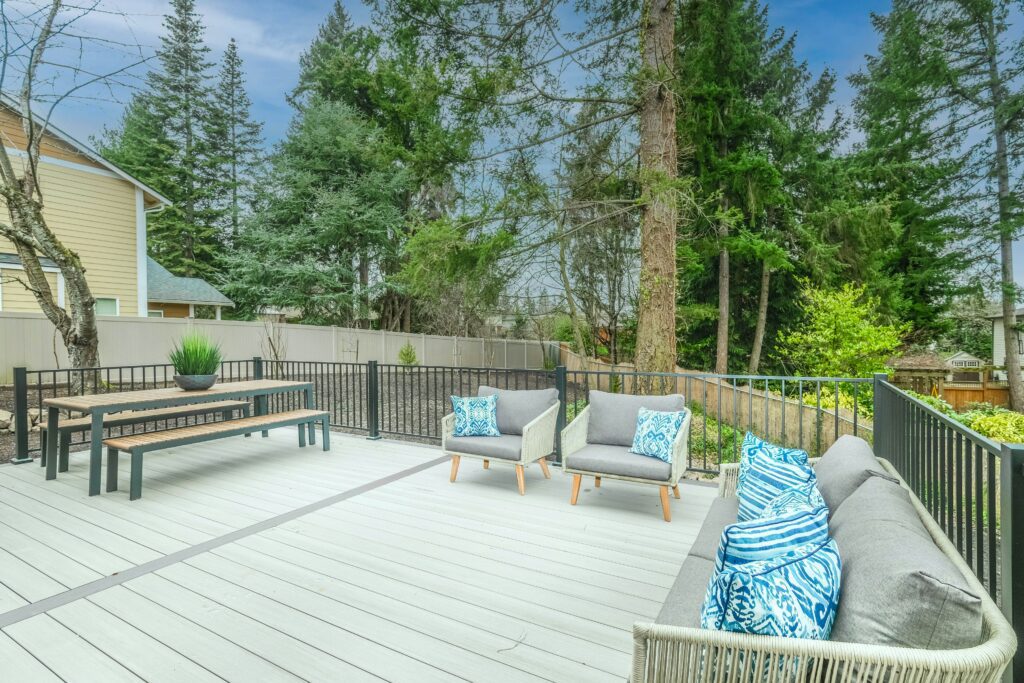
Making your outdoor space amazing means thinking about different choices. Deciding between a raised patio and a deck is a big decision. In this guide, we talk about the things you should think about to help you choose. Whether you want your outdoor space to blend in with your yard or you dream of having a high-up oasis with great views, we break down the things that will help you decide if a raised patio or deck is right for you. Let’s explore these options together, helping you pick what fits best with your lifestyle and the outdoor space you’ve been dreaming of. What’s the Difference Between Raised Patios and Decks? Raised patios are designed to fit with the natural shape of your yard, making a flexible and nice outdoor space. On the other hand, decks are even more flexible, especially when it comes to height. They can be built as high as you want, even for multiple stories. Decks give homeowners the power to enjoy great views and deal with tricky landscapes more easily. What are the Benefits of a Raised Patio Over a Deck? What are the Disadvantages of Raised Patios vs Decks? What are the Benefits of a Deck Over a Raised Patios? What are the Disadvantages of Decks Compared to Raised Patios? Is a raised patio a good idea? A raised patio can be a fantastic idea for various reasons, but its suitability depends on your specific needs, preferences, and the characteristics of your property. It’s essential to weigh the advantages against considerations like cost, installation time, and maintenance to determine if a raised patio aligns with your vision for an outdoor space. How High Can a Raised Patio Be? The height of a raised patio is subject to various factors, and while there is no fixed universal limit, there are considerations that influence how high a raised patio can be constructed. Here are key factors to understand when determining the height of a raised patio: While raised patios offer flexibility in adapting to the contours of the yard, it’s important to balance design aspirations with practical constraints. Homeowners should collaborate with professionals, adhere to local regulations, and prioritize safety to ensure that the raised patio achieves the desired height while maintaining stability and compliance with relevant building codes. Conclusion The choice between a raised patio and a deck is a significant decision that hinges on various factors, each offering its unique set of advantages. Whether you lean towards the adaptability and organic integration of a raised patio with your yard’s natural contours or the heightened versatility, especially in elevation, that decks provide, your decision should align with your lifestyle, preferences, and the specific characteristics of your outdoor space. Consider the aesthetics you desire, the practical aspects of maintenance, the local regulations governing construction height, and your willingness to navigate the nuanced details of each option. Both raised patios and decks present opportunities to transform your outdoor living space into a haven that suits your needs and fulfills your vision. Ultimately, the ideal choice boils down to what resonates with you and complements the unique features of your property. By weighing the benefits and considerations discussed, you’ll be well-equipped to make an informed decision, ensuring that your outdoor retreat becomes a personalized oasis that enhances your daily life and reflects your individual style. Whether you opt for the inviting charm of a raised patio or the elevated flexibility of a deck, your outdoor space is poised to become a place of relaxation, entertainment, and enduring beauty.
Choosing Pavers for Your Home: A Simple, Comprehensive Guide

Choosing pavers for your home is a crucial decision that goes beyond mere aesthetics; it directly influences the overall functionality and longevity of your outdoor spaces. Pavers serve as the foundation of your exterior design, impacting not only the visual appeal but also the practicality and resilience of areas like driveways, patios, and walkways. The choice of pavers significantly contributes to the visual harmony of your home. Different materials, colors, and textures allow for diverse design possibilities. Pavers can enhance the curb appeal, complementing the architectural style of your home and creating a cohesive outdoor environment. Whether you’re aiming for a modern, traditional, or rustic look, the right pavers serve as the artistic canvas that ties your outdoor spaces to the overall aesthetic of your property. Beyond aesthetics, the functionality of your outdoor spaces relies heavily on the choice of pavers. Considerations such as the intended use (driveway, patio, walkway) play pivotal roles. Durable and weather-resistant pavers are essential for high-traffic areas, ensuring they withstand the test of time and maintain their integrity under varying weather conditions. Proper selection contributes to the overall safety and usability of these outdoor spaces. In essence, the right pavers strike a delicate balance between beauty and practicality, elevating the visual appeal of your home while providing durable, functional surfaces that can withstand the demands of everyday use and the elements. As you embark on the journey of selecting pavers, keep in mind that your choice is an investment in both the aesthetics and functionality of your outdoor living spaces. Consider Home Architecture and Style when Choosing Pavers for Your Home Understanding and aligning the paver choices with your home’s architectural style is essential for creating a seamless and sophisticated outdoor environment. Consider the distinctive features and design elements of your home, whether it’s a modern, traditional, colonial, or Mediterranean style. Each architectural style has its own characteristic patterns, materials, and color palettes. Harmonizing your paver choices with these elements ensures that your outdoor spaces become a natural extension of your home, rather than a disparate addition. Paver choices should complement the existing design elements of your home. For instance, if your home features warm, earthy tones, opting for pavers with similar hues can create a cohesive and inviting atmosphere. Likewise, if your home boasts intricate details, selecting pavers with a more subdued pattern can prevent visual overload, allowing the architectural features of your home to shine. Choosing pavers that align with the architectural style establishes a visual continuity that enhances the overall curb appeal. Whether it’s a sleek and contemporary driveway for a modern home or rustic stone pavers for a cottage-style garden, the right selection creates a balanced and aesthetically pleasing transition from the architecture to the outdoor spaces. A thoughtfully chosen paver design that complements your home’s architecture can significantly enhance the overall property value. It not only adds to the visual appeal but also showcases a well-integrated and carefully considered outdoor design. This attention to detail contributes positively to the overall impression and desirability of your home. Pay Attention to Paver Size and Complexity Smaller pavers, such as cobblestone or brick, can be more intricate to install due to the need for precise placement and alignment. Larger pavers, like those in a plank format or oversized slabs, might appear simpler but can pose challenges in terms of weight and leveling, especially for larger areas. For smaller projects or simple designs, a DIY approach may be feasible, especially if you have experience with basic landscaping or construction tasks. Small patio areas or walkways with standard-sized pavers can be manageable for homeowners with some handy skills. However, it’s crucial to assess your comfort level with tasks like excavation, leveling, and proper installation techniques. Evaluate the Purpose and Traffic Intended Use: The first step is to define the purpose of the paved area. Is it a tranquil patio for lounging and entertaining, a durable driveway accommodating vehicle traffic, or a charming walkway guiding visitors through your garden? Each use comes with distinct requirements that should inform your choice of pavers. Traffic Levels: Consider the expected traffic levels the pavers will endure. Driveways, for instance, experience constant vehicular movement, requiring pavers with enhanced durability to withstand the weight and friction of cars. Patios may face moderate foot traffic, while walkways might have a balance of foot traffic and occasional use of wheeled items like carts or bicycles. Durability and Strength: Choose pavers with the appropriate strength and durability for the intended use. For driveways, opt for thicker, interlocking pavers or those specifically designed for heavy loads. In contrast, patios may benefit from versatile pavers that provide a mix of durability and aesthetic appeal. Walkways may allow for more decorative options, but durability remains a key consideration. Resistance to Wear and Staining: Consider the wear and tear the pavers are likely to endure. Driveways may be subjected to oil spills or tire marks, requiring pavers resistant to staining. Patios might face exposure to food spills and weather conditions, necessitating pavers that are easy to clean and maintain. Walkways, while not as heavy-duty, still benefit from pavers that resist erosion and staining. Choosing the Color and Texture of Pavers for Your Home Color Influence: The color of your pavers significantly influences the mood, style, and visual perception of your outdoor spaces. Lighter tones tend to create a sense of openness and airiness, making spaces feel larger, while darker hues can lend a cozy and intimate ambiance. Earthy tones often blend seamlessly with natural surroundings, offering a timeless and classic look. Vibrant colors can add a touch of personality and playfulness to specific areas. Coordinating with Home Exterior: To achieve a well-integrated look, consider coordinating the color of your pavers with the exterior color palette of your home. This creates a visual link between indoor and outdoor spaces, fostering a sense of continuity. Harmonizing colors ensures that the pavers complement the architectural style and overall design aesthetic, creating a unified and polished appearance. Texture and Visual Interest:
How Much Does a Paver Patio Cost? Everything You Need to Know
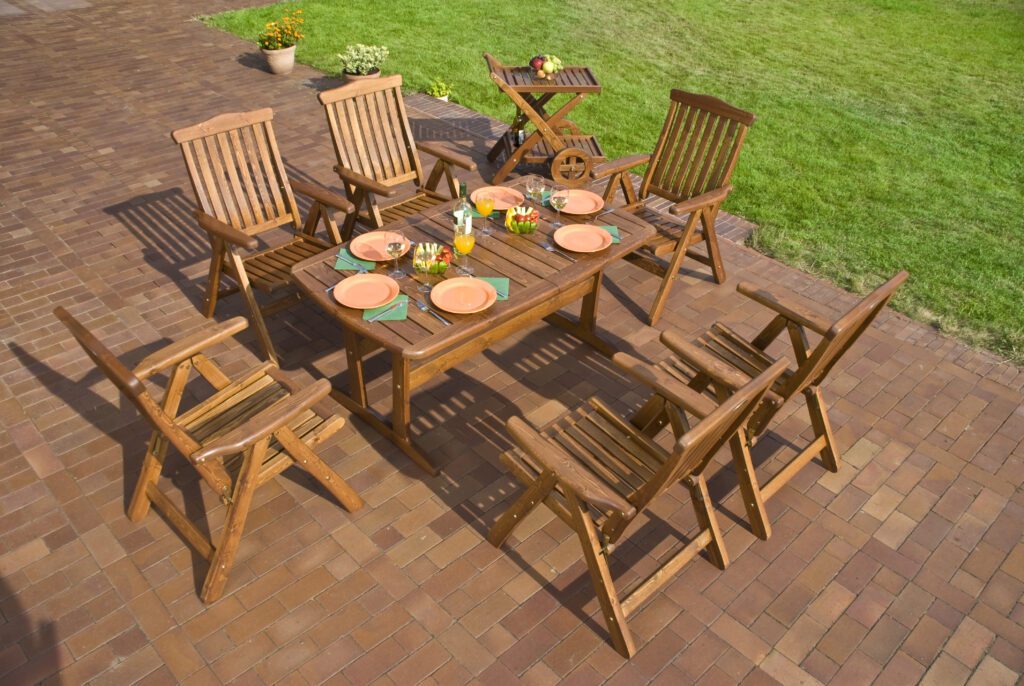
Paver patios are a popular choice for homeowners looking to enhance their outdoor living spaces. They offer versatility, durability, and an attractive aesthetic, making them an excellent option for both functional and aesthetic purposes. However, before embarking on your paver patio project for your Atlanta home, it’s essential to understand the costs involved. In this article, we’ll delve into the factors that influence the cost of a paver patio, providing you with valuable insights to make informed decisions about your outdoor oasis. We have catered these costs to be specific to the Metro Atlanta, Georgia region. Average Paver Patio Cost of Installation in Atlanta, GA To provide a clearer picture, here are average cost ranges for different scenarios: How Much Does a Paver Patio Cost per Square Foot to Install in Atlanta? Profession paver installation by a licensed, insured, and experienced crew can cost between $25 and $50 per square foot. Size of the Patio: Larger Paver Patios Cost More The size of your patio is a crucial factor that strongly influences the overall cost of the project. The dimensions of the patio directly correlate with the amount of materials needed, the labor required, and the overall complexity of the installation. Here’s a detailed elaboration on how the size of the patio impacts the cost: Choice of Paver Materials’ Impact on Paver Patio Cost The type of paver material you select plays a crucial role in determining costs. Pavers come in various materials, each with its own price range. Here are some common paver materials and their estimated costs per square foot: How Design Complexity Can Increase Paver Patio Cost The intricacy of your patio’s design can significantly affect costs. Simple, straightforward layouts with minimal patterns or curves are more cost-effective. However, if you desire intricate designs, such as herringbone patterns or circles, be prepared to pay more for labor and materials. Tips to Save on Paver Patio Cost Consultation and Quotes to Get an Accurate Paver Patio Cost Estimate Seeking quotes from local contractors is a crucial step in the process of planning and budgeting for any home improvement project, including the installation of a paver patio. Here’s an elaboration on why it’s essential to consult professionals and obtain accurate estimates tailored to your specific project requirements: Conclusion Transforming your outdoor space with a paver patio has the potential to turn it into a stunning and practical area for relaxation and entertainment. A paver patio can transform your outdoor space into a beautiful and functional area for relaxation and entertainment. While the cost of such a project can vary widely, understanding the key factors that influence it is crucial. By evaluating the size, material, design, site preparation, and labor costs, you can make an informed decision about your dream paver patio. Whether you’re aiming for a modest and cost-effective patio or a luxurious outdoor oasis, proper planning and budgeting will ensure your paver patio project is a success.
How to Build a Raised Paver Patio
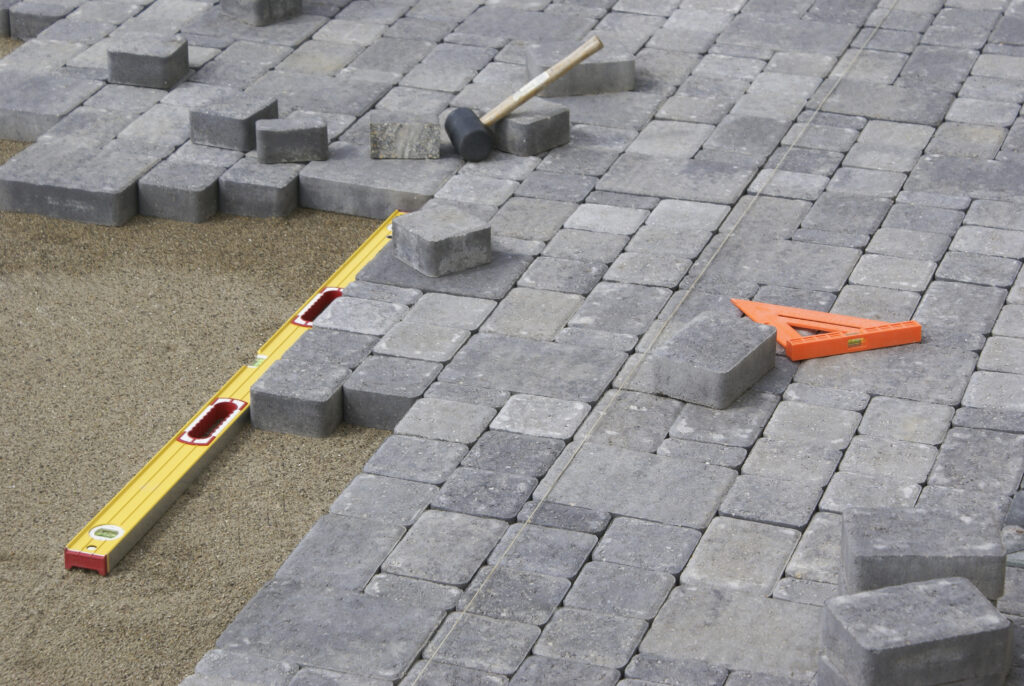
If you want to know how to build a raised paver patio, you’ve come to the right place. This project is particularly suitable for uneven or sloped landscapes where creating a level surface might be challenging. In such situations, a raised patio not only addresses the slope challenges but also adds an interesting dimensional aspect to your outdoor space. Additionally, if you seek a defined separation between functional areas, like a seating space or outdoor dining area, a raised patio provides an effective solution. Planning and Designing a Raised Paver Patio Before diving into the construction of your paver patio, meticulous planning is key. Start by measuring and marking the desired patio area. This initial step is crucial as it sets the foundation for the entire project. Consider the purpose of your patio, whether it’s for dining, lounging, or entertaining. This will influence the layout and dimensions, ensuring the final result aligns seamlessly with your outdoor living needs. Take the time to sketch a design that reflects both functionality and aesthetics. Consider factors such as traffic flow, seating arrangements, and any additional features you envision. If your patio is on a slope, think about incorporating retaining walls to create elevation changes. These walls not only add visual interest but also serve a practical purpose in leveling the space and preventing soil erosion. The design sketch should not only capture the overall layout but also include specific details like the placement of furniture, planters, or other decorative elements. Pay attention to the dimensions of the patio, ensuring it accommodates your intended use without feeling cramped or overly spacious. Tools You’ll Need to Build a Raised Paver Patio Step 1: Excavation Now, let’s get our hands dirty! Start digging the marked area for your paver patio using a shovel. For the part where you’re building a retaining wall, dig a trench about 24 inches deep. This depth accommodates the gravel base and the first layer of blocks. Make sure the excavated area is level, especially along the retaining wall trench. Take your time to get it right. Additionally, create a slight slope away from nearby structures to ensure proper drainage. This helps prevent water from pooling on your patio. This excavation phase is a bit of hard work, but it lays the foundation for a sturdy and level base for your patio. Pay attention to the details, and you’ll set yourself up for a successful and long-lasting outdoor space. Step 2: Base Preparation After completing the excavation, lay a layer of landscape fabric over the excavated area. This fabric serves as a barrier, preventing weed growth and promoting a low-maintenance patio space. Pour and spread a 4-inch layer of gravel uniformly across the excavated area. This layer acts as the primary base for your patio, providing stability and aiding in proper drainage. Ensure an even distribution of gravel to create a solid foundation. Use a tamper to compact the gravel thoroughly. This step is crucial for creating a stable and level base for your paver patio. The compaction process reduces the risk of uneven settling over time, ensuring a durable foundation for the subsequent layers of your project. Step 3: Installing Retaining Walls When constructing a raised patio, the installation of retaining wall blocks becomes a crucial component to achieve both stability and aesthetic appeal. Here’s a step-by-step guide: Step 4: Install Pavers Now that your retaining wall is in place for the raised patio, it’s time to lay the pavers and bring your outdoor haven to life. Follow these steps for a professional and visually appealing result: By following these steps, you’ll transform the raised patio into a functional and aesthetically pleasing outdoor space. The meticulous attention to detail, from maintaining straight lines to using a level and filling gaps with polymeric sand, ensures a patio that not only looks great but also stands the test of time. Additional Tips for Building a Raised Paver Patio Conclusion In embarking on the rewarding journey of building a raised paver patio, the step-by-step process outlined above serves as a comprehensive guide for beginners. By summarizing the key stages, we emphasize the importance of patience, safety, and seeking guidance throughout the DIY project. Commence with meticulous planning and preparation, including your well-thought-out design and a proper base layer, setting the foundation for your durable and visually appealing raised patio. The incorporation of retaining wall blocks adds structural integrity, especially for elevated sections, while your selection and precise installation of pavers contribute to the patio’s aesthetic charm. Crucial steps such as screeding the base, maintaining straight lines, and utilizing a level ensure a professional finish, emphasizing the significance of precision in your creative endeavor. As your project nears completion, the addition of a decorative border and thoughtful selection of outdoor furniture or features personalizes the space, turning it into a functional and inviting outdoor oasis. For someone like you venturing into the realm of DIY paver patio construction, the journey is not just about the final product but the experience gained along the way. The conclusion here is a gentle encouragement for you to take the time needed, prioritize safety precautions, and seek guidance whenever uncertainties arise. This approach ensures not only a successful and enjoyable DIY project but also the acquisition of valuable skills and confidence for your future endeavors. Happy building!
9 Paver Patio Mistakes To Avoid for A Successful Installation
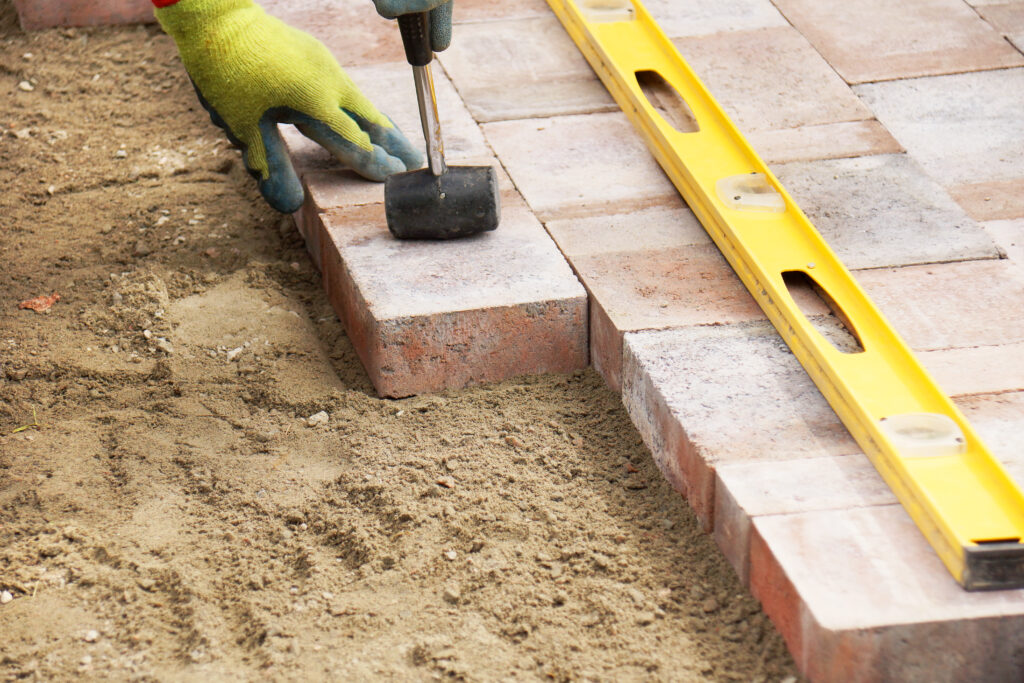
The popularity of paver patios has surged, and for good reason – these versatile and stylish alternatives provide an excellent platform for creating functional and visually appealing outdoor areas. However, in the pursuit of the perfect patio, it’s crucial to navigate around common paver patio mistakes that can compromise durability, aesthetics, and functionality. In this article, we’ll explore the rising trend of paver patios and guide you through avoiding paver patio mistakes to ensure your paver patio not only stands the test of time but becomes a true centerpiece of your outdoor lifestyle. 1. Insufficient Base Preparation The foundation of a successful paver patio lies beneath the surface, where the importance of proper base preparation cannot be overstated. Neglecting this crucial step in the installation process is akin to building a house on shaky ground—initially, it might seem stable, but over time, uneven settling and potential damage become inevitable. When the base preparation is inadequate, the repercussions manifest in the form of uneven settling. This uneven settling can lead to a host of issues, ranging from unattractive surface irregularities to more severe problems like paver displacement, cracking, or sinking. In essence, neglecting the proper base sets the stage for a domino effect of structural shortcomings that compromise the integrity of your patio. To avoid these pitfalls, it’s imperative to invest extra time and effort into preparing the base for your paver patio installation. This involves excavating the area to the appropriate depth, adding and compacting the necessary materials—typically crushed stone or gravel—in layers, and ensuring proper grading for optimal water drainage. In essence, a paver patio is only as strong as the base it rests upon. By prioritizing the groundwork and avoiding the common mistake of neglecting base preparation, you lay the foundation for a patio that not only enhances the aesthetic appeal of your outdoor space but also stands resilient against the test of time, weather, and usage. 2. Choosing the Wrong Paver Type Choosing the right pavers for your patio involves more than just aesthetic considerations; it requires careful thought about functionality, durability, and adaptability to local climate conditions. One common mistake in the realm of paver selection is opting for materials that are not suitable for the intended use or the specific climate of the area. Texture is a critical consideration often overlooked. The surface of your pavers should be chosen with the anticipated use in mind. Smooth surfaces may be aesthetically pleasing but can become slippery, especially in areas prone to rain or near pools. On the other hand, textured or tumbled pavers provide better traction, making them more suitable for outdoor spaces where safety is a concern. Color is not merely a design choice; it can also impact the performance of your pavers. Darker colors may absorb more heat, making them unsuitable for regions with scorching summers. Lighter-colored pavers, on the other hand, tend to reflect heat and are often preferred in warmer climates. Additionally, the color of your pavers should complement the overall design of your outdoor space, creating a harmonious and visually appealing atmosphere. 3. Poorly Planned Paver Patio Layout and Design One of the most common mistakes made in the pursuit of an ideal patio is underestimating the importance of careful planning, resulting in issues such as inadequate space utilization, irregular patterns, or a lack of a focal point—each of which can significantly impact both the visual appeal and functionality of the patio. Inadequate space planning is a crucial misstep that can lead to a patio that feels cramped or lacks a harmonious flow. Without thoughtful consideration of the available space, you might end up with awkward corners or insufficient room for essential features like seating areas or outdoor furniture. Proper space planning ensures that each element of your patio serves a purpose, creating a balanced and functional outdoor living area. Irregular patterns, if not carefully executed, can detract from the overall aesthetic appeal of the patio. Haphazardly arranged paver patterns may create a chaotic visual effect, diminishing the potential elegance of the design. Whether you choose a classic herringbone pattern or a more intricate design, ensuring consistency and precision in the layout is key to achieving a polished and sophisticated look. The absence of a focal point is another common mistake that can leave your patio feeling uninspired. A well-designed patio should have a central feature that draws the eye and serves as a focal point for the entire space. Whether it’s a striking fire pit, an elegant water feature, or a captivating outdoor dining area, a focal point anchors the design and adds character to the patio. To avoid these pitfalls, it’s essential to approach the layout and design of your paver patio with a keen eye for balance, proportion, and functionality. Consider the overall size of your patio, the intended use of different areas, and how each element contributes to the overall aesthetic. Ensure that pathways are well-planned, seating areas are strategically placed, and the design elements work cohesively to create a visually appealing and welcoming outdoor environment. 4. Neglecting Edge Restraints Edge restraints play a pivotal role in maintaining the stability and cohesion of the entire paver patio. These restraints act as a barrier, preventing individual pavers from moving out of place, spreading apart, or shifting over time due to various factors like foot traffic, weather, or soil settlement. Without proper edge restraints, the result can be a patio that loses its initial pristine appearance and functional integrity. Edge restraints provide a physical boundary that keeps the pavers securely in place, preventing them from migrating outward and compromising the overall structure of the patio. This is particularly crucial in high-traffic areas or regions with freeze-thaw cycles, where the ground is subject to movement and expansion. Inadequate or absent edge restraints may result in unsightly gaps between pavers, causing an uneven surface that not only diminishes the visual appeal of the patio but also poses a tripping hazard. Moreover, the lack of proper restraint can allow the infiltration
4 Paver Driveway Benefits: Reasons to Switch Now
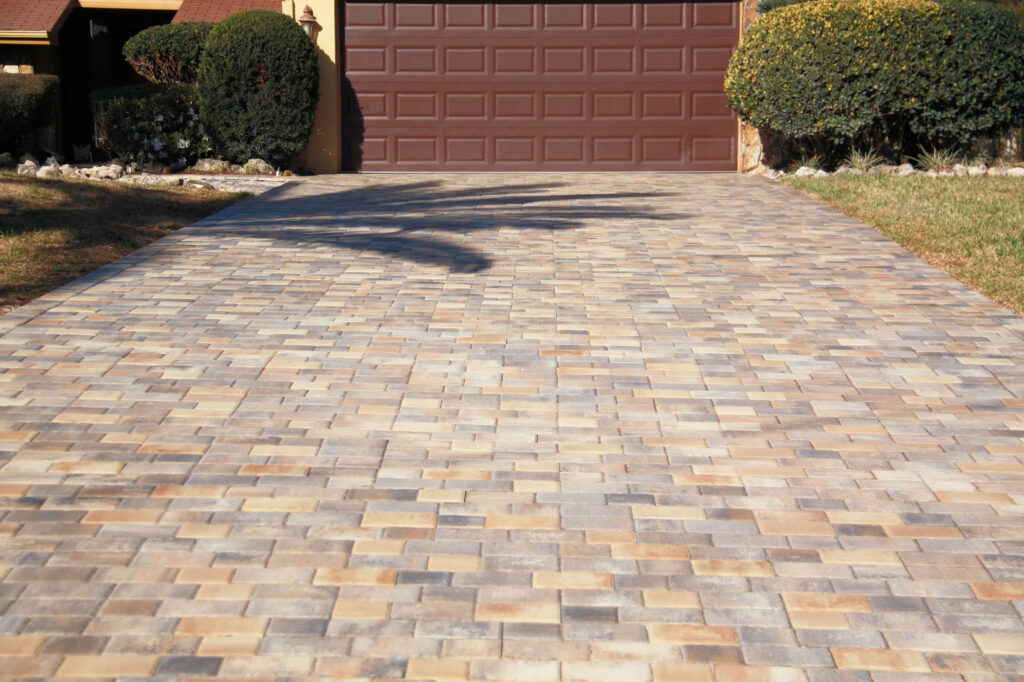
Your driveway is like the welcome mat to your home, setting the tone for what lies beyond. It’s the first thing you and your visitors see, and it needs to make a statement. When it comes to choosing the right material for your driveway, you’re embarking on an exciting journey of both style and durability. If you’re looking to enhance your property and ensure your driveway can withstand the test of time, one option stands out as a top contender: the paver driveway. In this article, we’re going to delve into 4 major paver driveway benefits, exploring the many reasons why they’re the best choice for your home. Let’s get started on the path to a driveway that’s as functional as it is beautiful. 1. Durability and Longevity Paver driveways are a testament to time-tested craftsmanship and engineering, making them an outstanding choice for your home. When we speak of durability, it’s not merely a buzzword; it’s a guarantee that your investment will withstand the rigors of everyday life and then some. In the world of landscaping and construction, durability is a cornerstone of quality. Paver driveways epitomize this principle, standing as an enduring testament to their ability to resist cracking, accommodate heavy vehicles, and deliver decades of service. When you choose a paver driveway, you’re not just investing in your home’s appearance; you’re investing in its future, where durability and longevity go hand in hand. 2. Versatility in Design The ability to customize and express your personal style is a valuable asset. Paver driveways offer this opportunity, allowing you to choose from a rich palette of colors, a variety of shapes, and endless design possibilities. Whether you’re aiming for a classic, rustic, or modern look, pavers transform your driveway into a work of art that complements your home’s architectural style and enhances its visual appeal, making a strong statement about your unique taste and personality. 3. Easy Maintenance Maintaining a paver driveway is a refreshingly straightforward process, thanks to the modular design of individual pavers. The ability to replace damaged units with ease and without disturbing the entire surface is a significant advantage. Moreover, simple maintenance tasks such as sweeping, weeding, and occasional pressure washing keep your paver driveway looking as good as new. This not only simplifies the upkeep of your driveway but also translates into long-term cost savings when compared to other materials like concrete or asphalt, where extensive repairs can be intrusive and expensive. 4. Increased Property Value A paver driveway is not just a functional feature of your home; it’s an investment in its overall value. The beauty, durability, and customization options of paver driveways enhance the curb appeal and perceived value of your property. This can help you set a higher asking price and make your home more attractive to potential buyers in the real estate market. The versatility and longevity of paver driveways, coupled with their ease of maintenance and repair, are features that can significantly boost the market competitiveness and overall value of your property when the time comes to sell. Conclusion A paver driveway offers a winning combination of durability, versatility, easy maintenance, safety, environmental benefits, and increased property value. As a landscaping and construction business owner, I can attest to the many advantages of paver driveways and their ability to enhance the overall aesthetics and functionality of your property. In the journey of home improvement, some choices rise above trends, embodying timeless quality and the essence of value. Your driveway, often underestimated in significance, plays a vital role in your property’s overall appeal and longevity. When considering your next home improvement project, keep in mind that a paver driveway is a wise and stylish choice that will stand the test of time. Contact us to discuss how we can help you transform your driveway into a beautiful and enduring feature of your home.
8 Best Outdoor Living Space Features to Invest In
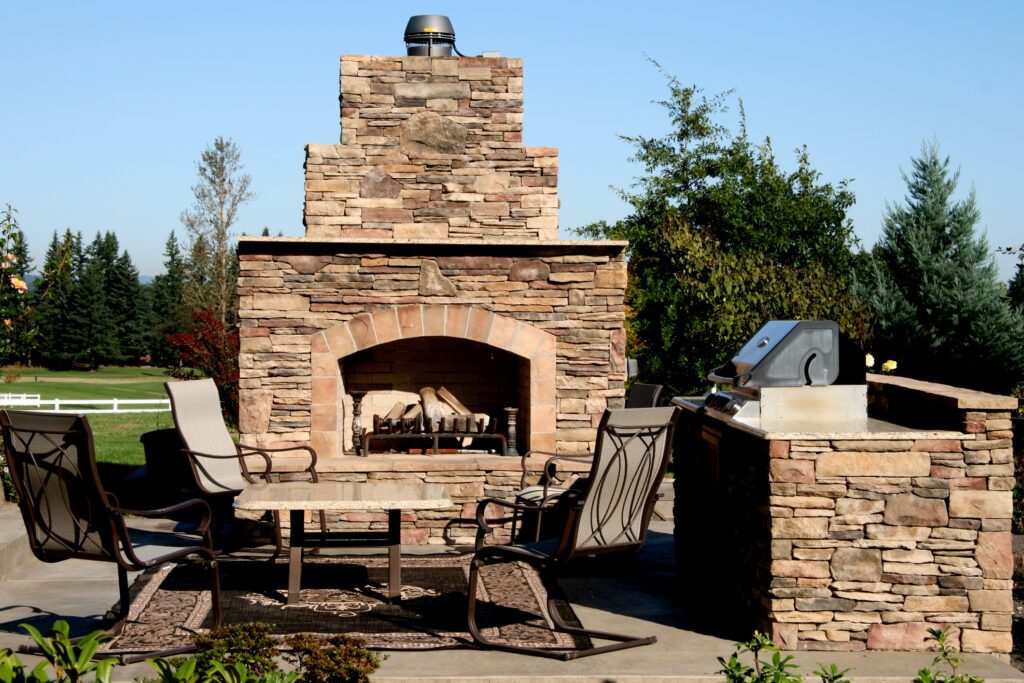
Do you ever look at your backyard and wonder, “How can I transform this space into something truly extraordinary?” Many homeowners dream of having a captivating outdoor living area but often feel overwhelmed by the endless options and choices. It can be challenging to determine which Outdoor Living Space Features to Invest In. This is where we step in to ease your dilemma and provide a solution. In this article, we’re going to introduce you to the top eight outdoor living space features that are not just investments; they’re splurges. These aren’t your run-of-the-mill outdoor upgrades; they’re the elements that will take your outdoor area from drab to fab, from ordinary to extraordinary. We’re here to guide you through the process, making it clear which features are genuinely worth your hard-earned money. Whether it’s an outdoor kitchen that turns your backyard into a culinary paradise or the serene beauty of a water feature that transforms your space into a peaceful oasis, we’ve got the solutions you’ve been seeking. We’ll provide you with the insight and information you need to make informed decisions about where to invest your resources for the most impact. So, if you’ve ever been unsure about how to take your outdoor living space to the next level, it’s time to relax, as we’re about to reveal the top eight features that are not just worth the splurge but also the keys to unlocking the full potential of your outdoor area. Let’s begin this journey to turn your dreams of a luxurious outdoor space into a beautiful reality. 1.Professional Design and Installation When it comes to landscaping and construction projects, I can’t stress enough the value of splurging on using professionals for the design and construction phases. As a business owner in this industry, I’ve seen firsthand how their expertise can make all the difference in the world. Professionals bring a level of expertise and experience to the table that’s hard to match. They’ve worked on a wide range of projects, encountered various challenges, and honed their skills over time. This means they can take your vision and execute it flawlessly. Whether you have a specific design in mind or you’re looking for creative solutions, they have the knowledge and creativity to make it happen. One of the significant advantages of hiring professionals is the potential cost savings in the long run. I’ve seen too many cases where well-intentioned DIY projects end up costing more due to mistakes or the need for revisions. Professionals can help you avoid these costly errors. They have a keen eye for detail and understand the intricacies of construction and landscaping, which means fewer chances of things going awry. Moreover, professionals are well-versed in local regulations and permits. This is crucial because you want your project to be compliant with all the necessary rules and codes. Trust me; it can be a complex and time-consuming process to navigate on your own. When you hire experts, you’re not just investing in their skills, but you’re also investing in peace of mind. You can rest assured that your project is in capable hands, and you can focus on other aspects of your business or enjoy your personal time without the stress of overseeing every detail. 2. Quality Outdoor Furniture Outdoor furniture is not an area where you should cut corners. The choice of materials like teak, wrought iron, or aluminum, and the durability they offer, will prove to be a worthwhile investment. Your outdoor spaces will look great, stay comfortable, and save you from the hassle of frequent replacements. It’s a decision that pays off in the long term and reflects positively on your business’s reputation for quality and attention to detail. Outdoor furniture needs to withstand the elements. Mother Nature can be quite unforgiving, and subpar furniture won’t hold up in the long run. This is where investing in high-quality materials like teak, wrought iron, or aluminum comes into play. These materials are not only stylish but incredibly durable. Teak, for instance, is renowned for its natural resistance to decay and insects, making it a fantastic choice for outdoor use. Wrought iron and aluminum are also excellent options due to their rust-resistant properties. By choosing these materials, you’re making a long-term investment. These pieces will not only look great in your outdoor spaces but also last for years. That means you won’t have to worry about constantly replacing or repairing your furniture, which can be both a hassle and an additional expense. Moreover, quality outdoor furniture often comes with features like UV-resistant coatings and weather-resistant cushions. These are crucial for maintaining the appearance and comfort of your furniture. Cheaper options may not offer the same level of protection, resulting in faded, worn-out, or uncomfortable seating. 3. Quality Lighting Outdoor lighting is a game-changer in terms of functionality and aesthetics. By splurging on high-quality fixtures, you’re not just getting a source of light; you’re investing in an element that can elevate the overall look and feel of your outdoor area. Think of it as the finishing touch that ties everything together. Well-placed lighting can create a magical ambiance. It’s amazing how a carefully lit garden, pathway, or outdoor seating area can completely change the atmosphere. You can highlight key features like trees, sculptures, or architectural elements, adding depth and drama to your space. This isn’t just about visibility; it’s about crafting an enchanting setting that’s perfect for evening gatherings, romantic dinners, or simply unwinding under the stars. Functionally, outdoor lighting extends the usability of your outdoor spaces into the night. It means you don’t have to retreat indoors when the sun sets. Whether it’s for a cozy evening with friends, a family barbecue, or just enjoying some quiet time, well-illuminated outdoor spaces are incredibly inviting. 4. Quality Patio or Decking Materials Sun, rain, wind, and temperature fluctuations can take a toll on traditional materials. This is where durable options like composite decking or natural stone come into play. They are engineered to withstand the
How Do Permeable Pavers Work? Everything You Need to Know
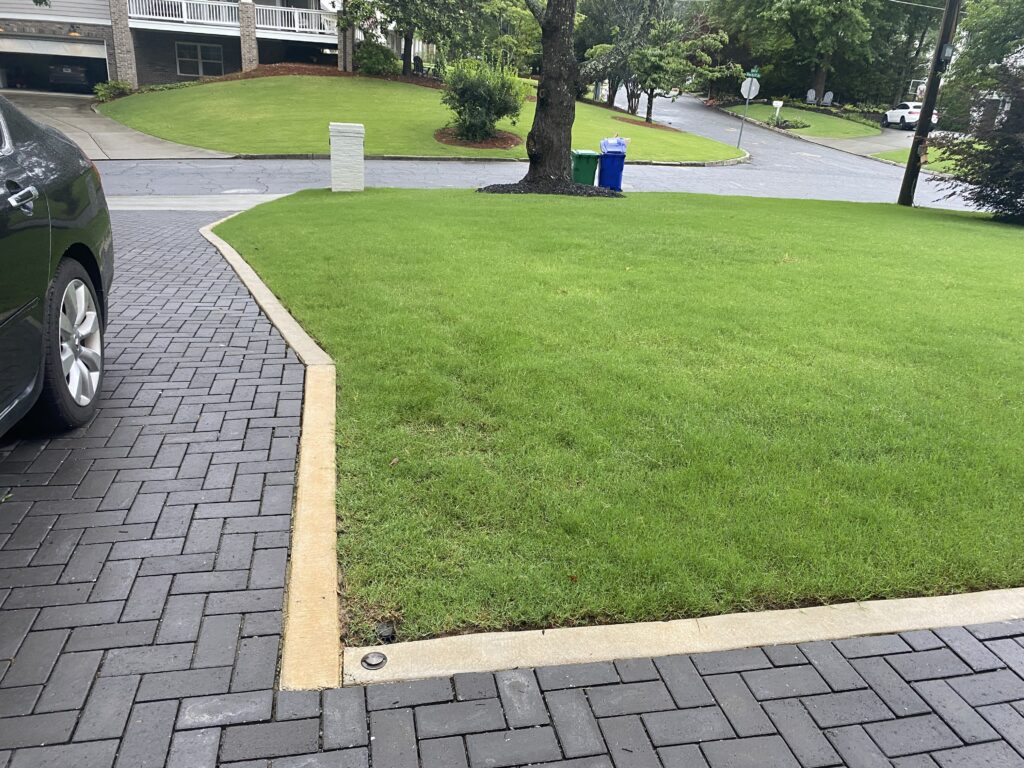
You may have heard of permeable pavers before and be wondering: how do permeable pavers work? Well, have you ever wondered what happens to the rainwater that falls on driveways, walkways, and parking lots? The answer might surprise you. Traditional impermeable surfaces can’t absorb water, leading to runoff that causes erosion, floods, and pollution. So, what’s the solution to this pressing problem? Imagine a world where stormwater isn’t a nuisance but a valuable resource. Picture a surface that not only withstands heavy loads but also manages rainwater efficiently, replenishing the earth and reducing pollution. Think about a sustainable option that enhances your property’s aesthetics while being eco-friendly. These are the promises of permeable pavers. In this article, we’ll unravel the mystery of permeable pavers and how they work. These innovative pavers are not just an alternative; they’re a revolution in construction and landscaping. We’ll dive deep into their inner workings, exploring their benefits, and understanding why they are the answer to the challenges of stormwater management. Get ready to discover how permeable pavers can transform your outdoor spaces into not only practical but environmentally responsible landscapes. Let’s embark on a journey to learn how they turn a problem into a sustainable solution. Understanding the Basics Permeable pavers, sometimes known as porous or pervious pavers, are a remarkable departure from the conventional solid surfaces most of us are accustomed to. Their unique design is a functional marvel, especially when it comes to managing rainwater. What sets them apart, however, is not the materials themselves, but the way they are assembled. In between these individual pavers, there are gaps. These gaps are not left empty but are deliberately filled with small, coarse aggregates like gravel or crushed stone. It’s these gaps and the materials within them that give permeable pavers their unique properties. Now, imagine a rainfall scenario. When raindrops fall on a typical solid surface, they collect and form puddles. This water then typically runs off, sometimes leading to issues like erosion, localized flooding, and the transportation of pollutants into water bodies. This is where the magic of permeable pavers comes into play. As rainwater hits the surface of permeable pavers, it doesn’t collect into puddles or rush off in rivulets. Instead, it infiltrates into the gaps between the pavers. These gaps act as a network of pathways for the water to move through, gradually descending into the ground below. This process remarkably mirrors nature’s way of letting rainwater seep into the earth, replenishing aquifers and nourishing plant roots. In essence, the gaps and the materials in between facilitate the controlled and managed flow of water. They turn what would be a runoff problem on solid surfaces into an eco-friendly solution. The rainwater, guided by gravity, is allowed to recharge the underground aquifers, which is vital for maintaining a sustainable water supply. But the benefits don’t stop there. Permeable pavers also incorporate a filtration system. As water infiltrates through the gaps and the aggregate materials, it undergoes a natural cleansing process. Impurities, pollutants, and debris are filtered out, ensuring that the water that eventually reaches the ground is significantly cleaner than it would be if it had simply run off a solid surface. In essence, permeable pavers are more than just construction materials; they are ingenious tools for sustainable landscaping. They offer a harmonious blend of form and function, addressing environmental concerns while enhancing the visual appeal of your outdoor spaces. So, when you consider permeable pavers, you’re not just choosing a surface; you’re choosing a water-management solution that works hand in hand with nature. It’s a transformative concept in the world of construction and landscaping. What are The Components of a Permeable Paver System? A permeable paver system is a well-structured solution that consists of several essential components working in harmony to achieve effective stormwater management. Here’s a breakdown of the key components: When all these components come together, they create a cohesive permeable paver system that not only offers aesthetic appeal but also effectively manages stormwater. The pavers themselves, supported by the base material, geotextile fabric, and subbase, work in unison to facilitate water infiltration, prevent erosion, and reduce runoff. The edge restraints maintain structural integrity, while any excess water can be managed with a drainage system. Ultimately, the native soil plays a vital role in the natural filtration and recharge of groundwater, making the entire system an eco-friendly and sustainable choice for landscaping and construction. What are the benefits of permeable pavers? Permeable pavers offer a wide range of benefits that make them an attractive choice for landscaping and construction projects. Here are some of the key advantages: How does the permeable paver reservoir work? The permeable paver reservoir is a critical component within a permeable paver system, designed to enhance the system’s efficiency in managing stormwater runoff. This reservoir plays a vital role in temporarily storing excess rainwater and allowing it to gradually infiltrate into the ground. Let’s delve into how this reservoir functions: How do Permeable Pavers Reduce Water Runoff? Stormwater runoff is a pervasive issue in urban settings. When heavy rainfall occurs, the water is often unable to permeate the surfaces it encounters. This process can lead to the erosion of the landscape, including riverbanks and streambeds. Soil erosion has far-reaching consequences, from altering the structure of water bodies to reducing the fertility of agricultural land. Furthermore, the volume and speed of stormwater runoff can overwhelm urban drainage systems. These systems are typically designed to handle a certain capacity of water flow. When they become inundated by excess runoff, it can lead to localized flooding. In urban areas, this flooding can affect streets, homes, and even businesses. It not only causes property damage but also disrupts daily life and poses safety hazards. This controlled infiltration process ensures that the water is dispersed gradually, reducing the risk of erosion. The rainwater doesn’t gain the same velocity it would on solid surfaces, meaning it’s less likely to dislodge soil and cause erosion in the landscape. Moreover,
Stamped Concrete Vs Pavers: How To Decide Between Them
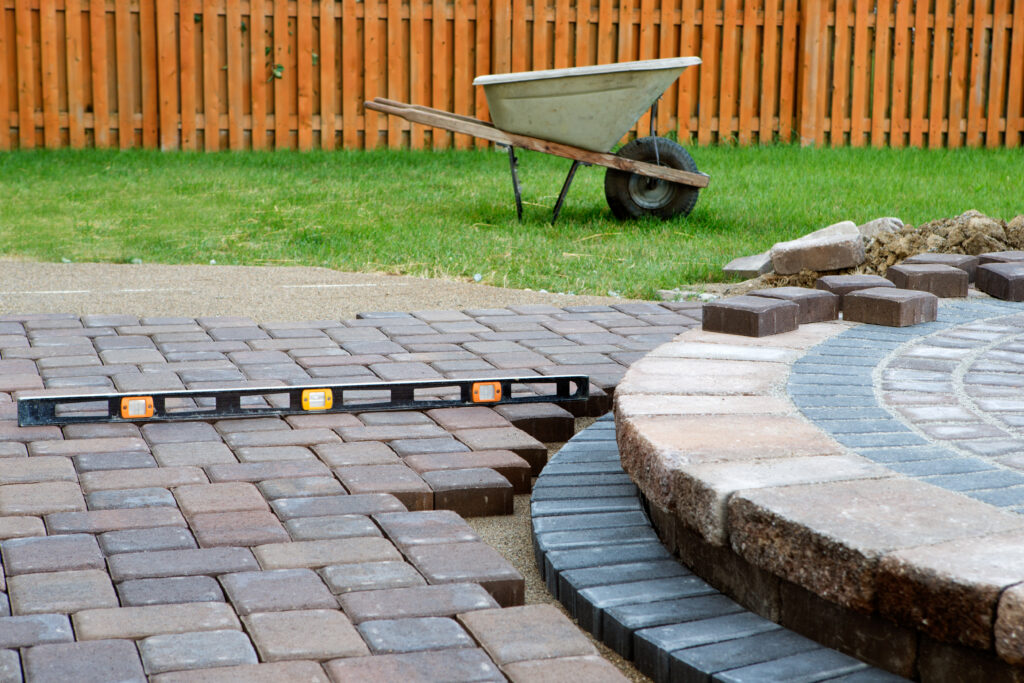
When it comes to enhancing your outdoor space, deciding to use stamped concrete vs pavers for your outdoor living space is one of the biggest decisions you’ll face. As a landscaping and hardscaping business owner, I’ve seen countless clients struggle with this very decision. They want a hardscape that not only adds beauty but also durability to their property. Stamped concrete and pavers are two of the most popular choices, each with its unique set of advantages and considerations. The question that keeps coming up is, “Which one is better for me?” In this article, I’m going to guide you through the stamped concrete vs. pavers dilemma. By the time you finish reading, you’ll have a comprehensive understanding of the benefits, drawbacks, and most importantly, which one is the right fit for your landscaping project. Get ready to pave the way for your dream outdoor space, as we explore the world of stamped concrete and pavers in depth. Let’s make an informed choice together. Aesthetic Versatility: Stamped Concrete Vs Pavers In the realm of aesthetic versatility, pavers and stamped concrete each bring their unique qualities to the table. Let’s compare these two options concerning their design flexibility and visual appeal: Aesthetic Versatility Verdict: Tie In the competition of aesthetic versatility, pavers and stamped concrete offer a close match. Pavers excel with their timeless design options and diverse color choices, allowing for intricate, customized patterns. On the other hand, stamped concrete provides a wide variety of patterns and colors, enabling you to mimic the look of various materials. The choice between these two ultimately depends on whether you prefer the classic appeal of pavers with customizability or the broader range of patterns and textures offered by stamped concrete. Both options empower you to create an outdoor space that not only meets your practical needs but is also a visually captivating masterpiece that reflects your unique style and landscape vision. Durability: Stamped Concrete Vs Pavers Durability is a critical factor when selecting materials for your outdoor space. In this comparison, pavers indeed win the durability category, but it’s important to explore the reasons behind this victory: Durability Verdict: Pavers Win In the durability category, pavers are the clear winners. Their resistance to cracking and long lifespan make them a top choice for outdoor spaces that need to withstand heavy use and harsh weather conditions. Stamped concrete, while durable in its own right, may require more maintenance and can be more prone to cracking, making it better suited for areas with lower traffic or where aesthetics are prioritized over long-term durability. When it comes to creating an enduring outdoor space, pavers take the lead. Repairability: Stamped Concrete Vs Pavers Repairability Verdict: Pavers Win Pavers clearly take the lead in terms of repairability. Their ability to replace individual units with precision and ease ensures that your outdoor space can remain in top condition without the need for extensive repairs or disruptions. In contrast, stamped concrete, while not impossible to repair, can be more challenging and may require professional expertise to achieve satisfactory results. If you prioritize an outdoor surface that can be easily and effectively repaired when needed, pavers are the superior choice. Initial Cost: Stamped Concrete Vs Pavers Initial Cost Verdict: Stamped Concrete Wins Stamped concrete wins in the category of initial cost due to its lower material costs and quicker installation. This makes it an appealing choice for those with budget constraints or those seeking a more cost-effective solution for their outdoor project. While pavers offer timeless charm and durability, they often come with a slightly higher initial investment due to the materials used and the labor-intensive installation process. If keeping your project within budget is a top priority, stamped concrete is the more economical option. Resale Value: Stamped Concrete Vs Pavers When it comes to resale value, pavers are the clear winners. We’ve discussed several factors above that give pavers a significant advantage when looking for the right paving material for an outdoor living space. This is reflected in potential buyers valuing pavers at a higher price point than stamped concrete. Resale Value Verdict: Pavers Win Pavers take the lead in terms of resale value. Their timeless appeal, durability, and the ability to create a customized and well-maintained outdoor space can significantly enhance your property’s overall value. While stamped concrete can also positively impact resale value, pavers have a reputation for offering a more substantial return on investment due to their enduring beauty and long-term durability. If you’re looking to make a wise investment in your property’s resale value and you’re deciding on Stamped Concrete Vs Pavers , pavers are the superior choice. Overall Winner: Pavers In this head-to-head comparison, pavers emerge as the clear winner, securing victories in almost all categories. Their exceptional durability, low maintenance, and unmatched design flexibility make them an excellent choice for your outdoor project. While stamped concrete has its merits, pavers offer a more enduring and versatile solution, ensuring a long-lasting and visually stunning addition to your landscape. When you choose pavers, you’re not just investing in your property; you’re investing in timeless beauty and functionality. When it comes to decididing on Stamped Concrete Vs Pavers for your outdoor project, the choice between stamped concrete and pavers hinges on several key factors. As we’ve explored in this comparison, the decision ultimately depends on your priorities, your specific needs, and the overall context of your landscape. If you prioritize a cost-effective solution with a wide range of design options and a quicker installation process, stamped concrete is the ideal choice for those who want a blend of versatility and affordability. It caters to a variety of patterns and colors, offering ample room for creative expression. However, it’s important to note that it may require more maintenance and repairs over time. On the other hand, pavers excel in terms of durability and low maintenance, making them the superior choice for those who seek a long-lasting and low-hassle outdoor surface. Their timeless appeal, ease of repair, and
